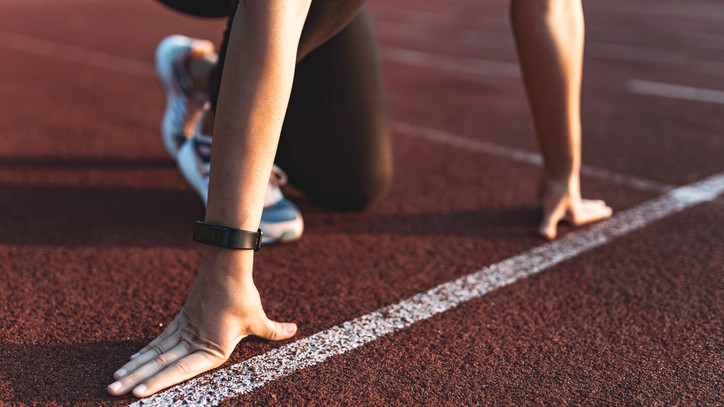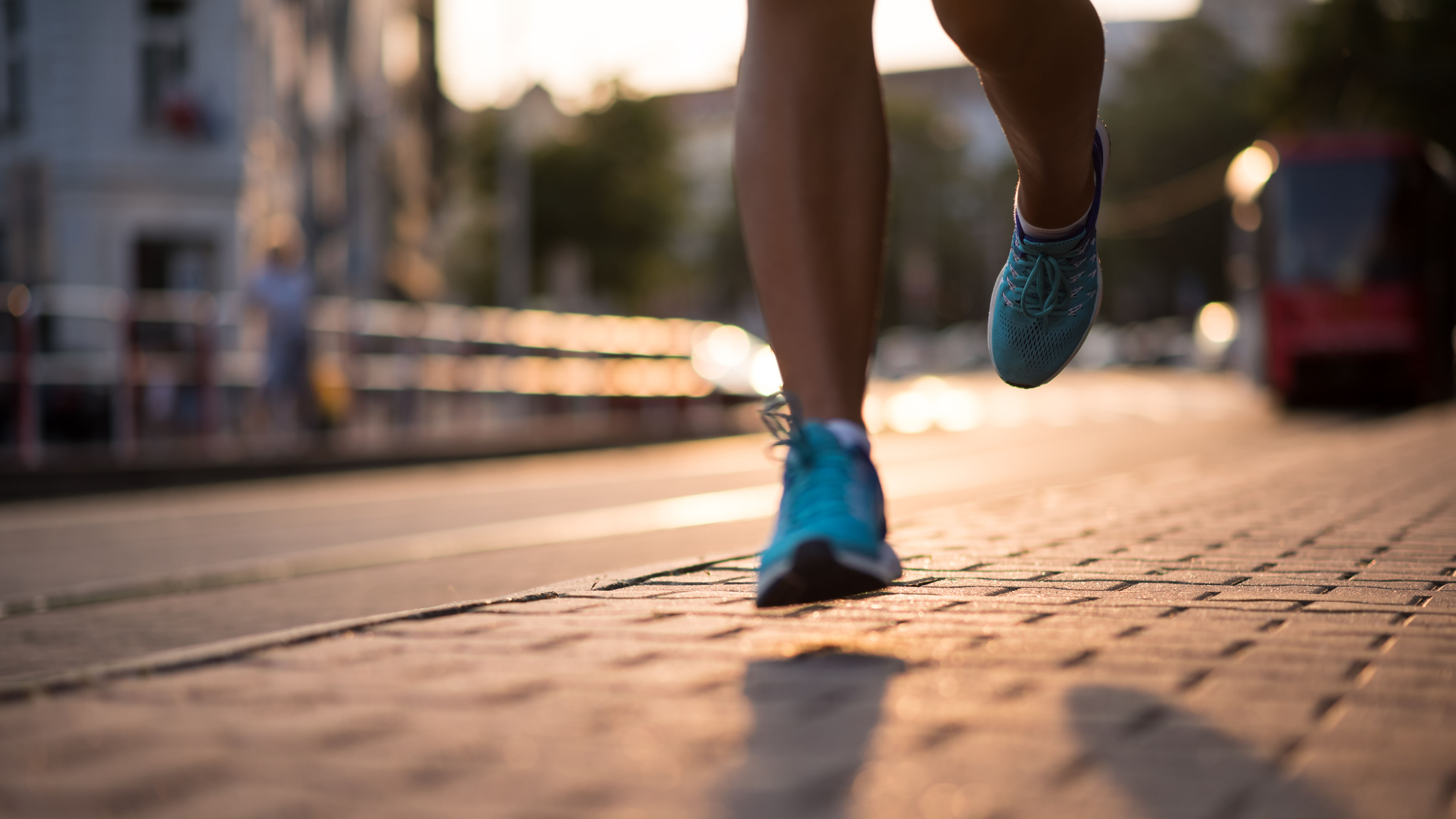Correct running foot placement: how to achieve the perfect form
Pay attention to your running foot placement to improve performance and reduce your risk of injury

When gearing up for a 10K or track session, running foot placement is unlikely to be at the forefront of most people’s minds. Most of us spend more time researching the best running headphones, considering our quality of sleep, and focusing on improving our diets than we do thinking about foot placement.
But, if you want to reduce your risk of injury and even increase your speed, top trainers say that paying attention to how you plant your feet is just as important as getting enough rest and considering what to eat before your run.
To find out more, we spoke to two experts in the field: Arj Thiruchelvam, a running coach with 16 years' experience supporting athletes of all abilities, from novices to Olympic athletes, and Tom Goom, a physiotherapist and running therapist, who explains the evidence that supports the link between using different foot strike techniques and injury.
Below, we share their expert advice around correct running foot placement, including how different foot strikes affect your running and whether different styles of footstriking can reduce your risk of injury. Let’s take a look…
- Related: Best sports bras for running
What is foot strike?

Whether you’re just learning how to start running or you’ve been competitive racing for years, learning the ins and outs of foot strike can be really helpful. “Foot strike is how the foot makes contact with the ground, rolls through and pushes off to restart the next cycle of the running gait,” explains Thiruchelvam, the head running coach at Performance Physique.
A foot strike can usually be placed into one of three categories depending on which part of the foot makes contact with the ground first. These are:
Forefoot strike - The ball of the foot touches the floor first.
Heel strike or rearfoot strike - You land on your heel after each stride.
Midfoot strike - The middle of the foot is the initial area to make contact with the ground.
Get the world’s most fascinating discoveries delivered straight to your inbox.
Strides can also be defined as neutral, pronated or supinated, depending on whether you place more weight on the inside, outside or center of your foot when running. To find out more about this, try reading our guides to supination vs pronation and the best running shoes for supination.
The prevalence of each type of foot strike - forefoot, heel and midfoot - can vary depending on the speed and duration of your run, says physiotherapist and running specialist Tom Goom (AKA The Running Physio).
He points to a 2011 study published in the Journal of Sports Sciences which found that, at the 10km mark of a long-distance run, 88.9% of the 936 runners observed were classified as heel strikers. Just 3.4% were classified as midfoot strikers, and an even smaller 1.8% were labelled forefoot strikers.
“Interestingly, in this study, nearly 6% had an asymmetrical strike pattern (the foot strike of their left and right feet differed),” Goom says. “Foot strike can change under fatigue or with higher speeds – some runners (though not all) will move towards a forefoot strike as they run faster.”
- Related: How to run properly
How do different foot strikes affect your running?
This depends on a multitude of contextual factors, Goom says. “Each individual runner has a different build and running gait, strengths and weaknesses. For example, running with a forefoot strike may not be optimal for someone with weaker calf muscles or Achilles pain as this style places more stress on this area.
“A key point is that there isn’t one foot strike that will suit everyone and we should avoid pushing everyone towards one specific technique when our needs vary significantly.”
However, running coach Thiruchelvam usually recommends employing a midfoot strike to maximise performance.
“This is a hotly debated topic, but it’s generally accepted that a midfoot landing is the most advantageous, and the reason for this relates to simple physics. A heel strike occurs in-front of the body and therefore acts as a braking force, slowing down or interrupting the stride, reducing the elastic energy and prolonging the ground contact time,” he explains.
“A midfoot and forefoot landing minimises any braking forces, encouraging the landing to occur underneath the hips to drive the body towards the next stride, and reducing the impact forces that occur. This then allows the Achilles to use the stored elastic energy in our lower limbs.”
How can you practise different types of foot strike?
“Running drills such as high knee walks, high knee runs and straight legs are all good starting points to improve running technique,” Thiruchelvam says.
“Following this, you should try to incorporate small aspects of these drills into your easy, casual runs. Think about landing on the middle of your foot for 100m, then relax and repeat shortly after. One popular cue to use when running is to try and drop the foot directly underneath you – this can stop a runner from heel striking.”
Can different shoe styles help with foot strike?

“Rather than help, think of running shoes as influencing,” Thiruchelvam says. “A minimalist shoe (with little to no cushioning) is designed to strengthen the foot, take the emphasis away from the shoe and encourage a midfoot or forefoot landing."
That being said, because we’ve changed the way we move, it’s important to practice and train your foot to use a minimalist shoe because not doing so can greatly increase the chance of sustaining an impact or overuse-related injury.
At the other end of the spectrum, Thiruchelvam explains that a cushioned shoe encourages a heel strike because it makes the movement comfortable and the foam that’s present in cushioned sneakers can also help reduce the risk of injury.
“My advice would be to opt for a cushioned shoe which is lighter in weight and possesses no more than a 10mm heel drop (the difference in the height of the sole at the heel and toe of the shoe). Use this in combination with your running drills and cues, and you should improve your running technique.”
Goom agrees that “certain running shoes may encourage more of a forefoot or rearfoot strike,” although he argues that individual response is variable. “A minimalist shoe may lead to more of a forefoot strike, while a shoe with a great heel to toe drop may encourage a rearfoot strike.”
What is most important is to find what works for you, and to avoid dramatic changes in both your running technique and footwear. “Big changes in shoe style that result in large alterations to running gait should be made carefully as this can lead to injury,” Goom says.
Can different styles of foot striking reduce the risk of injury?
“Changing foot strike has a big impact on how load is managed by the body,” Goom explains. “Rearfoot (or heel) striking is thought to increase load on the hip and knee while forefoot tends to increase load on the calf, Achilles and foot. Forefoot striking may result in a higher step rate, but this can be achieved without needing to change your striking pattern.”
He adds: “Foot placement may be linked to injury, especially if there’s a change in style as this can increase stress on tissues that aren’t used to that level of load. For example, calf pain is very common after switching to forefoot”.
“On the whole though, there isn’t one foot strike pattern that is better for reducing injury or improving performance. It’s commonly claimed that forefoot is best, but this isn’t supported by the research and switching foot strike can cause more problems than it solves.”
Bibliography
Larson, P., Higgins, E., Kaminski, J., Decker, T., Preble, J., Lyons, D., McIntyre, K., & Normile, A. (2011). Foot strike patterns of recreational and sub-elite runners in a long-distance road race. Journal of Sports Sciences, 29(15), 1665–1673.

Harry Bullmore is a fitness writer covering everything from reviews to features for LiveScience, T3, TechRadar, Fit&Well and more. So, whether you’re looking for a new fitness tracker or wondering how to shave seconds off your 5K PB, chances are he’s written something to help you improve your training.
When not writing, he’s most likely to be found experimenting with a wide variety of training methods in his home gym or trying to exhaust his ever-energetic puppy.
Prior to joining Future, Harry wrote health and fitness product reviews for publications including Men’s Health, Women’s Health and Runner’s World. Before this, he spent three years as a news reporter with work in more than 70 national and regional newspapers.


